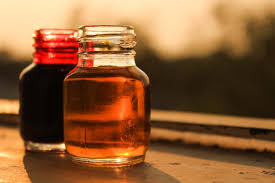**The Magic of Surfactant: How Tiny Molecules Supercharge Oxygen Flow**
(What Is The Relationship Of Surfactant To Surface Area As A Function Of Oxygen Transport)
We breathe without thinking. Oxygen moves from our lungs into our blood. This process feels simple. But a hidden hero makes it work smoothly: surfactant. This stuff is amazing. It’s a special molecule working at the tiniest scales. It plays a huge role in getting oxygen where it needs to go. Let’s explore the surprising link between surfactant, surface area, and oxygen transport.
**Main Product Keyword:** Surfactant
**1. What is Surfactant?**
Surfactant is short for “surface-active agent.” It’s a special type of chemical. Think of it like a molecule with two different personalities. One end loves water. The other end hates water and loves air or oil. This split personality gives surfactant its superpowers. It can hang out right at the boundary between different things. Think water and air. Or oil and water. Its main job is to reduce surface tension. Surface tension is like the invisible “skin” on the surface of a liquid. Water bugs walk on it. Surfactant weakens this skin. In our lungs, surfactant is a complex mix. It contains fats and proteins. It coats the inside of our tiny air sacs, called alveoli. Without it, breathing would be incredibly hard work.
**2. Why Does Surfactant Matter for Oxygen Transport?**
Oxygen transport needs surfaces. In our lungs, oxygen moves across the thin walls of the alveoli into the blood. Think of the alveoli like millions of tiny, moist balloons. The surface area of these balloons is huge. This large area is crucial. It allows lots of oxygen to move quickly. But there’s a problem. Water molecules naturally stick together. This creates strong surface tension inside each tiny alveolus. High surface tension wants to shrink the balloon. It makes the alveoli collapse. Collapsed alveoli have zero surface area. No surface area means no oxygen can cross. This is where surfactant saves the day. It dramatically lowers the surface tension inside the alveoli. It stops them from collapsing. It keeps them open and inflated. Open alveoli mean maximum surface area is available. Maximum surface area means maximum oxygen can move into the blood efficiently. Surfactant makes the whole system work.
**3. How Surfactant and Surface Area Team Up for Oxygen Delivery**
The relationship is direct and powerful. Surfactant enables large, stable surface area. Large surface area enables efficient oxygen transport. Picture an inflated balloon versus a crumpled one. The inflated balloon has a large, smooth surface. The crumpled one has a small, folded surface. Surfactant keeps the lung’s “balloons” (alveoli) inflated. More surfactant means lower surface tension. Lower surface tension means alveoli stay open easier. Open alveoli create vast surface area. Think of a field covered in fully opened flowers versus buds. The open flowers expose much more surface. In the lungs, this exposed surface is where oxygen exchange happens. Surfactant acts like a magic film. It lets the alveoli expand easily with each breath. It prevents them from sticking shut when we breathe out. This constant, large surface area is non-negotiable for life. It allows the massive amounts of oxygen our bodies need every minute to cross into the bloodstream without effort.
**4. Where We See Surfactant Power in Action**
The most vital application is in our own lungs. Premature babies often struggle to breathe. Their bodies haven’t started making enough surfactant yet. Doctors give them artificial surfactant. This treatment saves lives. It helps their tiny alveoli stay open. It boosts oxygen transport immediately. But surfactant’s magic isn’t just for biology. Think about industrial processes needing oxygen transfer. Wastewater treatment plants use huge tanks. Microbes in the water consume pollutants. They need oxygen to do this. Engineers bubble air through the water. Oxygen must move from the air bubbles into the water for the microbes. Surfactant-like molecules can be added. These molecules reduce the water’s surface tension. Lower surface tension lets the air bubbles break into smaller bubbles. Smaller bubbles have more total surface area compared to large ones. More bubble surface area means more places for oxygen to leave the bubble and enter the water. This speeds up oxygen transfer massively. It makes the treatment faster and cheaper. The same principle applies in chemical reactors. It applies in fish farms needing oxygenated water. Anywhere gas needs to move efficiently into a liquid, surfactant principles can help maximize the surface area for that transfer.
**5. Surfactant and Oxygen: Your Questions Answered**
* **Do adults ever need extra surfactant?** Usually, no. Healthy lungs make plenty. Severe lung injuries can damage surfactant production. Examples include bad pneumonia or inhaling smoke. In these rare cases, artificial surfactant might be used.
* **Is surfactant only about oxygen?** Mostly, yes. But it helps with carbon dioxide removal too. CO2 moves out of the blood into the alveoli. Keeping alveoli open helps CO2 leave just like it helps oxygen enter.
* **How does surface tension actually collapse alveoli?** Imagine two wet glass slides stuck together. Pulling them apart is hard. The water creates surface tension, gluing them. Inside an alveolus, the water lining wants to pull the walls together. High surface tension makes the walls stick. Surfactant breaks this “glue,” letting the walls stay apart.
* **Can too much surfactant be bad?** Generally, no. The body regulates its production well. In artificial settings, too much surfactant might create excessive foam. This could be a problem in industrial processes.
(What Is The Relationship Of Surfactant To Surface Area As A Function Of Oxygen Transport)
* **Are artificial surfactants the same as lung surfactant?** They are similar but not identical. Medical surfactants mimic the key parts of natural lung surfactant. They focus on the molecules that lower surface tension the most effectively. Industrial surfactants vary widely. They are chosen for the specific job and the liquid involved.
Inquiry us
if you want to want to know more, please feel free to contact us.




